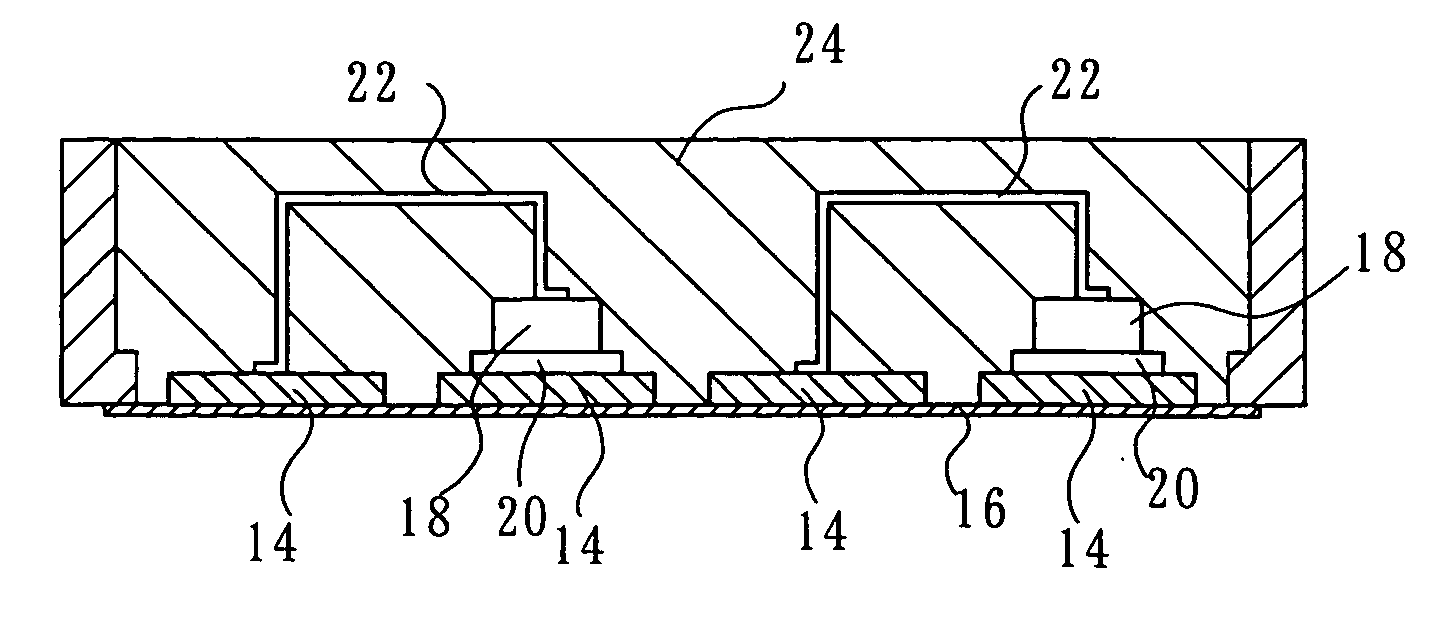Solar cell module connector and method of producing solar cell module panel
a solar cell module and connector technology, applied in the direction of light radiation electric generators, coupling device connections, generators/motors, etc., can solve the problem of easy damage, and achieve the effect of convenient connection of cathodes
- Summary
- Abstract
- Description
- Claims
- Application Information
AI Technical Summary
Benefits of technology
Problems solved by technology
Method used
Image
Examples
first embodiment
[0019] A solar cell module connector according to the present invention has an insulating box 2 as shown in FIGS. 1A through 1D. The insulating box 2 may be formed of an insulating material, e.g. an epoxy resin. Two spaced-apart partitions 4 and 6 divide the insulating box 2 into three zones, namely, a solar cell module lead line terminal zone 8, a diode heat sink zone 10, and an output cable terminal zone 12.
[0020] Plural, four, for example, heat sinks 14 are arranged in a row in the diode heat sink zone 10, being spaced from and in parallel with each other. Each of the heat sinks 14 may be a rectangular steel plate having a thickness of, for example, 3 mm. One end of each heat sink 14 is located nearer to the solar cell module lead line terminal zone 8, while the other, opposite end of each heat sink 14 is located nearer to the output cable connection terminal zone 12. The bottom of the diode heat sink zone 10 is partly or entirely removed to form an opening, and a heat-conductive...
sixth embodiment
[0040]FIG. 7 shows a connector according to the present invention. The connector includes an insulating box 100 having a diode zone in the form of, for example, a mount casing 102, a partition in the form of, for example, an insert casing 104, and a lid 106. The mount casing 102 is a flat, rectangular parallelepiped, having an opening upward, for example, and is formed of insulating material, e.g. epoxy. The insert casing 104 is disposed to close the opening of the mount casing 102, and the lid 106 is disposed on the insert casing 104.
[0041] Plural, three, for example, heat sinks 108 are spaced from each other on an upper surface of the bottom of the mount casing 102 along the length direction of the casing 102. As in the connector according to the first embodiment, openings may be formed in the bottom of the mount casing 102, with heat-conductive insulating sheets bonded to close the bottom of the openings. The heat sinks 108 are bonded to the upper surfaces of the respective ones ...
PUM
 Login to View More
Login to View More Abstract
Description
Claims
Application Information
 Login to View More
Login to View More - R&D
- Intellectual Property
- Life Sciences
- Materials
- Tech Scout
- Unparalleled Data Quality
- Higher Quality Content
- 60% Fewer Hallucinations
Browse by: Latest US Patents, China's latest patents, Technical Efficacy Thesaurus, Application Domain, Technology Topic, Popular Technical Reports.
© 2025 PatSnap. All rights reserved.Legal|Privacy policy|Modern Slavery Act Transparency Statement|Sitemap|About US| Contact US: help@patsnap.com



